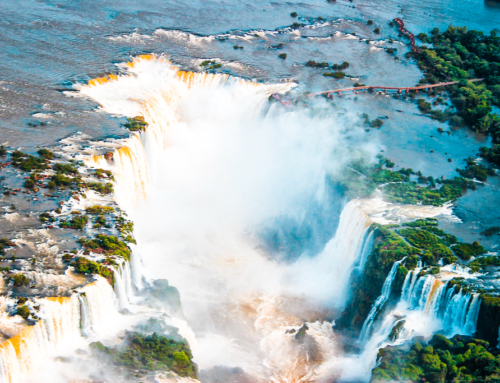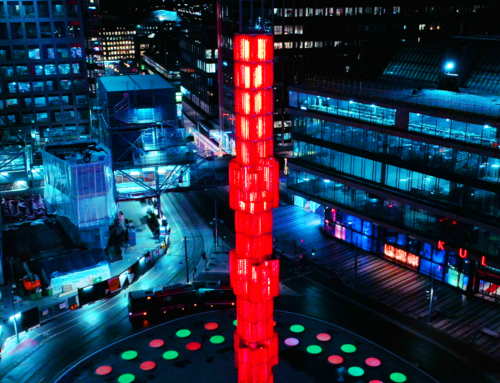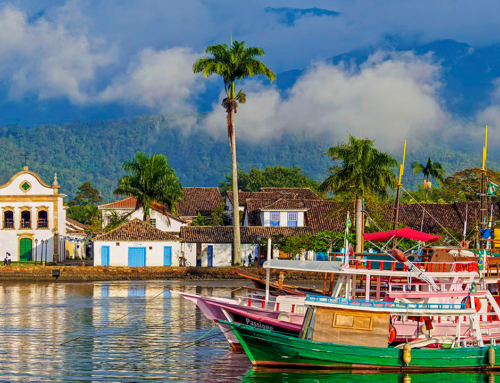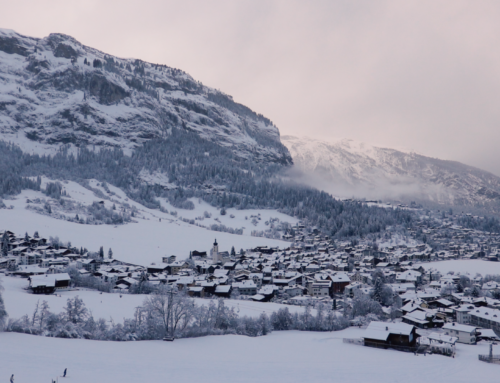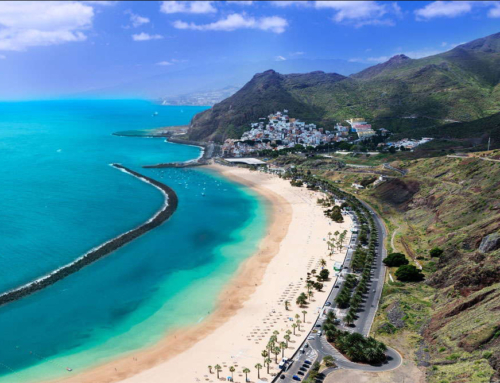The capital of Sweden is a cosmopolitan city with a tangled old town, stylish young districts, a dynamic city centre. Spread across 14 islands on Lake Mälaren, Stockholm’s very environment encourages you to rove and see where you’ll end up. There are around 50 bridges in the centre alone, while ferries are a fun way to get about. When it comes to fashion, design and music Stockholm is well ahead of the curve, and many of the coolest places to shop and go out are on the island of Södermalm south of the centre. The lion’s share of the museums and family days out are on Djurgården, a wooded island where the city goes for rest, culture and fun.
Aerial view of Stockholm
Best places to visit in Stockholm:
1. Gamla Stan
Begin by going back to Stockholm’s roots at one of Europe’s great medieval centres, spread over three islands. You’ll be in the midst of a true Hanseatic trading city, where gabled shops and warehouses are painted various shades of gold. These now host all manner of restaurants, many garnering international awards, as well as museums, studios, bijou boutiques, cafes and bars. On the eastern side of the old town there’s a long sequence of parallel cobblestone lanes leading in from the water and dipping under passageways. Come here to squeeze through Mårten Trotzigs Gränd, an alley that tapers to just 90 centimetres across.
2. Skansen
The visionary teacher and academic Artur Hazelius founded what was the first ever open-air museum in the world on Royal Djurgården in 1891. The idea was to show future generations what life was like in Sweden before the Industrial Age, and it has been borrowed by hundreds of museums around the world. More than a century Skansen it’s still the best museum in its class, in 30 hectares and with a large cast recreating rural scenes from all over Sweden down to the finest detail. A Sami camp from the Arctic circle, a farm from the remote western Härjedalen province and a open-air zoo with wolves, lynxes, otters, grey seals, reindeer and moose are a few of the attractions.
3. Vasa Museum
An awesome relic from the 17th-century reign of the all-conquering King Gustavus Adolphus has been revived at this museum the west shore of Djurgården. The Vasa was a 64-gun warship that went down on its first voyage in 1628. It remained in the deep until 1961 when it was lifted to the surface and slowly and painstakingly restored. The vessel has almost all of its original material and is the only 17th-century ship of this scale to make it to the present day. And with the ship came a payload of artefacts that tell us what it was like to sail on the Vasa. These are in ten exhibition rooms, and there’s a multilingual movie about the ship and its resurrection.
4. Modern Art Museum
On the island of Skeppsholmen at the Baltic Sea entrance to the city is the pick of Stockholm’s superb institutions for modern and contemporary art. The museum started out in the 1950s in a former military building before moving into this Rafael Moneo-designed edifice at the end of the 90s. Some of the names that even casual dabblers will know are Picasso, Marcel Duschamp, Henri Matisse and Salvador Dalí. People also come especially for the museum’s restaurant, which looks over to Djurgården. There’s also a sculpture with works by Picasso, Dan Graham and Alexaner Calder.
5. Royal Palace ( Kungliga slottet )
With more than 600 rooms Stockholm’s Royal Palace is up there with the largest palaces in Europe. There are five museums in this mostly 18th-century complex, which isn’t just a historical relic: The King of Sweden still lives here, most royal events and receptions happen at the palace and all the various departments associated with the royal family operate in these plush environs. Just a brief run-down of the must-sees includes the reception rooms, the royal apartments, the Rikssalen (Hall of State) and the Ordenssalarna (Halls of the Orders of Chivalry). Of the five museums, the Treasury is predictably lavish and Gustav III’s Museum of Antiquities has ancient Greek and Roman sculptures bought by the king during his trip to Italy in 1783-84.
6. The City Hall ( Stadshuset )
One of the buildings that makes Stockholm, well, Stockholm is the City Hall, unmistakeable for its 106-metre tower and spire. Composed of eight million bricks it’s the perfect expression of the Nordic National Romantic style and was inaugurated in June 1923 400 years to the day after Gustav Vasa’s arrival in the city. The dimensions of the spaces inside are spellbinding, most of all the Blue Hall where the Nobel Banquet is held every December. After dinner, there’s a dance in the Golden Hall, which is adorned with 18 million gold mosaic tiles. An integral part of any visit is scaling the tower and gazing over Stockholm.
7. Strandvägen
Beside the water on Östermalm is one of the most exclusive addresses in the city: A boulevard and esplanade with views to Gamla Stan and Skeppsholmen, and tying Djurgården to the centre of the city. Strandvägen was plotted in the late 19th century and completed in 1897 for the Stockholm World’s Fair. The long row of palatial apartment buildings is in the Revivalist style, epitomised by Isak Gustaf Clason’s Bünsow Building, which looks like a Loire Valley chateau. Stockholm’s tour boats and water taxis converge on Strandvägen, and the esplanade has scores of cafes and bars for a quick refreshment before carrying on your way.
8. Riddarholmskyrkan ( Church in Gamla Stan )
The strikingly beautiful Riddarholmskyrkan, on the equally pretty and under-visited islet of Riddarholmen, was built by Franciscan monks in the late 13th century. It has been the royal necropolis since the burial of Magnus Ladulås in 1290, and is home to the armorial glory of the Seraphim knightly order. There’s a guided tour in English at noon (included with admission) and occasional concerts. Holiday closures are frequent; check the website for updates.
9. Gröna Lund
Djurgården is also the scene for Sweden’s oldest amusement park, and although Gröna Lund first opened in 1883 it is very much up to date. New roller coasters are unveiled every few years, like the state-of-art “Insane” on which you’ll spend half the ride upside down. Another, “Eclipse” is a swing ride more than 120 metres in height. Away from the white-knuckle rides the littler visitors will have the time of their lives on tea cups, carousels, bumper cars and romping through fun houses. There are concerts in the park all summer, and Paul McCartney, Bob Marley and ABBA are a few of the big names to have played here.
10. Nordic Museum
Artur Hazelius, founder of the Skansen Museum, also conceived this ethnographical attraction a few moments away on Djurgården. The Nordic Museum spells out the cultural history of Sweden from about the 16th century onwards, showcasing its traditional costume and textiles, ceramics, jewellery, furniture and folk art. You can also get a handle on the Sami, Sweden’s only indigenous culture, and dip into their history, beliefs and way of life. Isak Gustaf Clason was hired to design the building and came up with an extraordinary Neo-Renaissance palace that was finished in 1907 after a 19-year construction and would be worth the visit alone.
